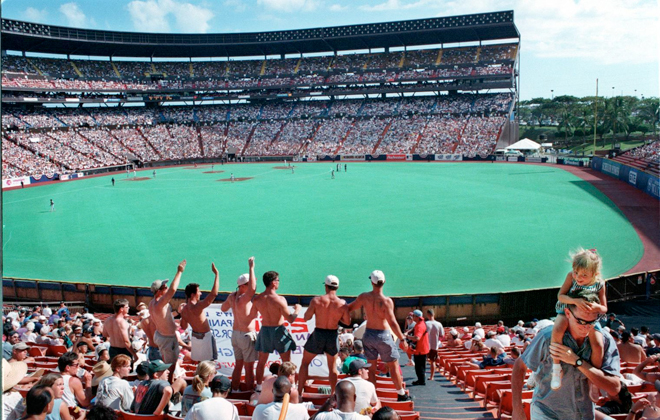The state should not limit itself to a smaller seating capacity when replacing 50,000-seat Aloha Stadium, several speakers told the Aloha Stadium Authority during a public meeting at the facility Thursday night.
"I think it would be a travesty to limit it to 30,000 seats," Kent Untermann, a businessman and former University of Hawaii football player, said at the sparsely attended meeting.
Calling 30,000 "half-baked," Untermann said, "I think we really need to go big or UH football will not exist if we go to 30,000."
A June 26 report to the Aloha Stadium Authority by the New York firm Foley & Lardner recommended a "30,000 to 35,000-seat stadium on the lower portion of the (current) stadium site" for $132 million to $192 million.
A separate report this week by a UH-commissioned firm in Los Angeles conceptualized a 30,585-seat multipurpose facility for $165 million to $190 million, depending upon whether a partial roof is included. It did not address potential sites.
Only eight speakers addressed stadium issues in a meeting attended by about 40 people, exhausting just 27 minutes of a planned one-hour open microphone period.
Mike McCartney, president and CEO of the Hawaii Tourism Authority, said the HTA contends "the seating capacity of 35,000 to 40,000 would be sufficient with the inclusion of luxury or VIP boxes."
But McCartney urged "consideration also be given to the new facility being constructed in a way that allows for temporary seating to be added or removed when needed."
He said the new facility should have features to accommodate multiple sports as well as concerts, festival, exhibits and large meetings.
Other speakers suggested the Stadium Authority consider what might be appropriate to eventually lure a Major League Soccer team here and urged the panel to not look just at UH’s needs.
Authority member Keith "Kika" Bukoski said "no final decisions have been made" regarding the future of the state’s largest sporting facility and that public testimony would be considered as the panel moves on.
Aloha Stadium starts its 40th season in August, and officials are trying to decide about the future of the Halawa facility in the face of rising repair and maintenance costs.
The state Department of Accounting and General Services has estimated that $120 million in "high priority health and safety improvements are needed to keep the stadium operational for the next five to 10 years," according to the Foley & Lardner report.

